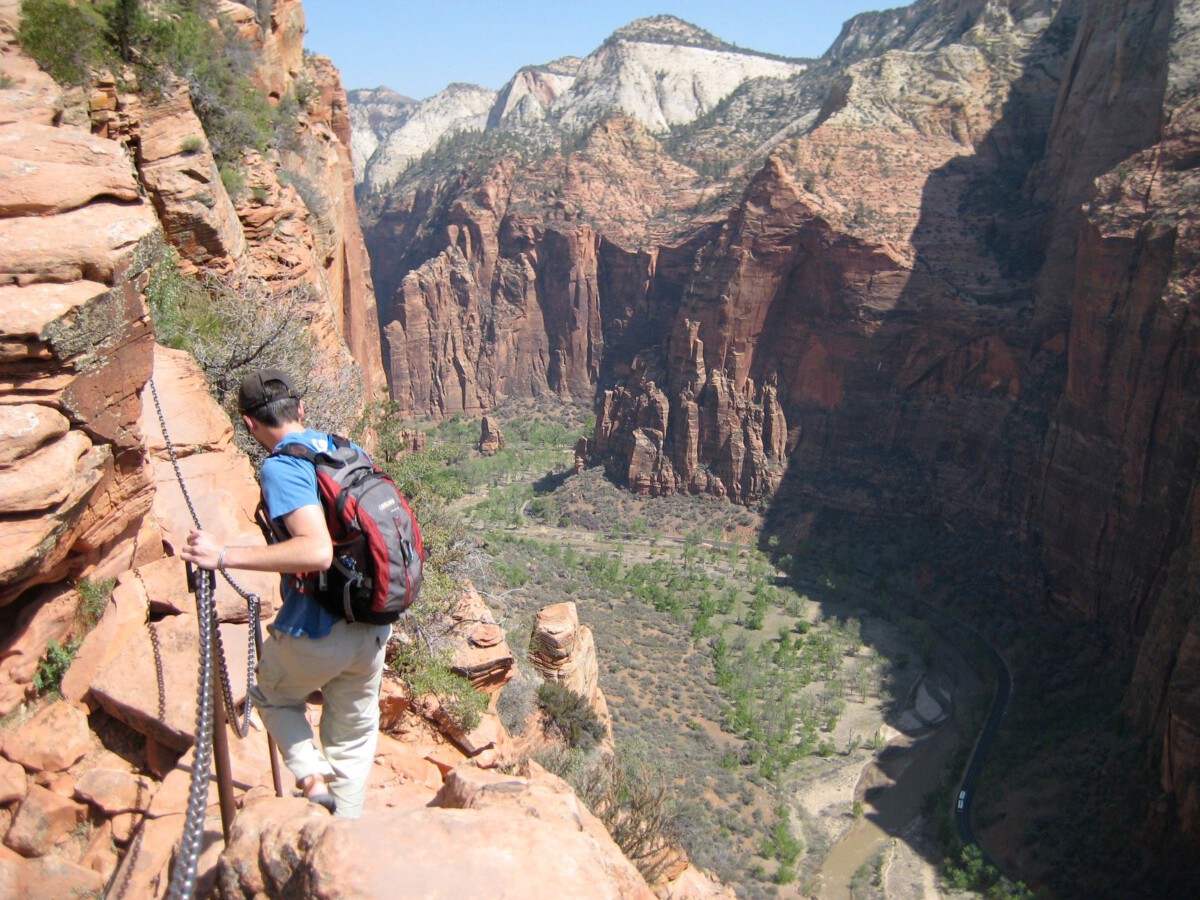Angels Landing: The Trail That Strikes Fear and Awe

What if a walk in nature could make your heart race not just from the climb, but from the sheer drop at your side? Angels Landing in Zion National Park, Utah, is that kind of hike. This five-mile round trip journey has lured thrill-seekers and casual hikers alike for decades, promising jaw-dropping views and a sense of accomplishment. But beneath the beauty lies a darker truth: this trail is so perilous, it’s been quietly erased from certain guidebooks and online maps. The final half-mile, a knife-edge ridge with chains to grip, leaves no room for error. For some, the risk is part of the draw. For others, it’s a reason to think twice before lacing up their boots.
A Trail Carved into History and Legend

Angels Landing wasn’t always famous for its danger. Early explorers marveled at its natural grandeur, naming it because “only angels could land there.” Over the years, it grew into a symbol of adventure, drawing more than 300,000 hikers annually. But as visitor numbers soared, so did the number of accidents. Families, solo travelers, and groups have all faced the daunting challenge of the narrow ridge. The historical legacy of the trail is now intertwined with stories of rescue operations and heart-stopping moments. Some locals even whisper that the trail’s reputation is both a blessing and a curse for the park.
Statistics That Shock: The Real Toll of Angels Landing

Numbers don’t lie: since 2000, at least 13 people have lost their lives on this trail, according to National Park Service records. That’s not counting the dozens of injuries, many of which required rescue by helicopter or search and rescue teams. In 2021 alone, multiple serious incidents made headlines, including falls and stranded hikers. The statistics are especially grim when considering the trail’s short distance—most fatal accidents occur on the final stretch, where the chain-assisted path narrows to mere feet, with 1,000-foot drops on either side. These sobering facts have forced park officials and mapmakers to reconsider how they present Angels Landing to the public.
The Quiet Disappearance from Maps and Guides

Something unusual began happening in recent years: certain hiking maps and online platforms stopped listing Angels Landing. Some guidebooks now skip over it or include a warning so stern it might as well be a “do not enter” sign. This wasn’t a marketing move—it reflected genuine concern for public safety. By removing the hike from some resources, organizations hope to deter inexperienced hikers from stumbling onto the trail unprepared. Even some GPS apps have been updated to exclude or flag the route as extremely hazardous. The silence around its omission speaks volumes about the risks involved.
Safety Chains and Permits: A New Era of Precaution

To battle the ever-present danger, Zion National Park has implemented a string of safety measures. The most visible are the metal chains bolted into the rock, offering hikers something to grip during the most terrifying sections. Park rangers now patrol the trail more frequently, providing guidance and monitoring for risky behavior. Educational signs warn that the hike is not for everyone and urge those with a fear of heights or physical limitations to turn back. In 2022, the park introduced a permit system, limiting the number of hikers on the ridge at any given time. This has helped manage crowds and, according to park statistics, led to a noticeable drop in accidents.
The Deadly Role of Weather on the Ridge

Weather is a silent but deadly force at Angels Landing. Even a light rain can turn sandstone into a slick, treacherous surface, multiplying the risk of slips and falls. Snow and ice, though rare, make the ridge almost impassable. Flash floods and high winds add more danger, sometimes forcing sudden trail closures. Park officials urge visitors to check conditions before attempting the hike, and there are frequent warnings about the unpredictability of mountain weather. Despite these alerts, every year hikers underestimate the elements, sometimes with tragic results. The lesson is clear: nature always has the final say.
Why Hikers Keep Coming Back

Despite the well-known risks, Angels Landing remains a bucket-list adventure for many. The promise of panoramic views, the adrenaline rush, and the camaraderie among fellow hikers are powerful draws. Social media has only fueled the trail’s mystique, with breathtaking photos and daring videos circulating widely. Still, the hike is not for the faint of heart or the unprepared. Rangers often stress the importance of sturdy shoes, ample water, and an honest assessment of one’s own limits. For some, the challenge is irresistible. For others, the tales of near-misses and rescues are enough to stay away.
Local Voices: Between Pride and Concern

The communities surrounding Zion National Park have a complicated relationship with Angels Landing. On one hand, the trail brings in tourists who support local businesses. On the other, every accident is a reminder of the real costs—emotional, financial, and even environmental. Some residents push for stricter regulations, like daily limits or mandatory safety briefings. Others argue that personal responsibility, not more rules, should guide visitors. The debate continues, but all agree that one tragedy is too many, and that the park’s wild beauty must be respected.
Permits, Crowds, and the Future of the Trail

The introduction of a permit system has changed the face of Angels Landing. Now, would-be hikers must enter a lottery to secure a spot on the trail, drastically reducing overcrowding. Early reports suggest this has led to fewer accidents and a better experience for those who do get a permit. Some experts advocate for even stricter controls, such as mandatory training or age restrictions. Others propose creating alternative trails to disperse visitors and ease the strain on the iconic ridge. The park is exploring all options, knowing that the balance between access and safety is delicate—and vital to get right.
A Hike That Changed the Way We Think About Adventure

Angels Landing’s story is one of breathtaking vistas, daring feats, and sobering lessons. Its quiet removal from some maps is a reminder that nature’s beauty can be matched by its unpredictability. The measures taken by Zion National Park—chains, permits, warnings—show a commitment to preserving both the trail and the lives of those who walk it. Whether the hike should be promoted, restricted, or even closed is a question that lingers in the minds of officials and adventurers alike. The trail stands as both a dream and a dare, inviting us to weigh our thirst for adventure against the value of caution.






